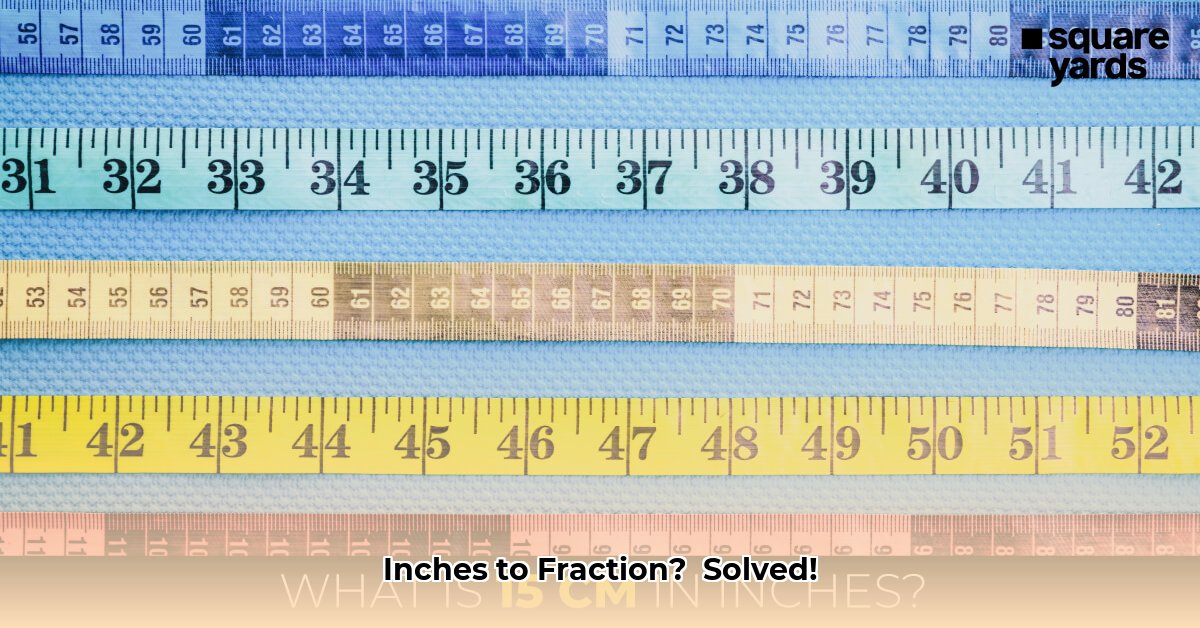
Turning 236 inches into a fraction might seem daunting, but it's a straightforward process with a few different methods. This guide provides step-by-step instructions, catering to varying needs from simple estimations to high-precision applications in woodworking, engineering, and construction.
Understanding Inches and Fractions
We commonly break down inches into fractions: halves, quarters, eighths, sixteenths, etc. These are powers of two (2, 4, 8, 16, 32, 64...), making calculations and measurements easier. The choice of denominator (the bottom number of the fraction) depends on the required precision. A smaller denominator means less precision; a larger denominator offers greater accuracy.
Method 1: Choosing the Right Denominator
Let's use 32nds of an inch (1/32") as a starting point – a common choice in woodworking that balances accuracy and ease of use.
Steps:
- Divide: Divide 236 inches by 32: 236 ÷ 32 = 7 with a remainder of 12.
- Form the Fraction: The remainder (12) becomes the numerator (top number) of your fraction, and the denominator remains 32. Therefore, 236 inches is 7 and 12/32 inches.
Method 2: Simplifying the Fraction
The fraction 12/32 can be simplified. Find the greatest common divisor (GCD) of 12 and 32, which is 4. Divide both numerator and denominator by 4: 12 ÷ 4 = 3 and 32 ÷ 4 = 8. Therefore, 236 inches is equivalent to 7 and 3/8 inches.
Method 3: Adjusting for Precision
Need higher precision? Use a larger denominator like 64ths (1/64"). For less accurate applications, a smaller denominator like 1/8" or 1/16" might suffice. The choice depends on the tolerance required for your specific task. For example, a cabinet maker needs higher precision than someone measuring the length of a room.
Practical Applications
Converting inches to fractions is crucial in diverse fields:
- Woodworking and Carpentry: Accurate measurements are essential for creating well-fitting joints and ensuring the structural integrity of projects.
- Engineering and Manufacturing: In manufacturing, even minor errors can have significant consequences; using fractions allows for precise control over dimensions.
- Construction: Accurate measurements are crucial for ensuring that structures are built to specification and are safe and stable.
Potential Pitfalls and Error Handling
Rounding errors can arise. Using a calculator can minimize these errors, but always double-check your calculations carefully to avoid costly mistakes. Remember, accuracy is paramount in many practical applications.
Quick Reference Table: Denominators and Results
| Denominator | Result | Simplified Result | Notes |
|---|---|---|---|
| 32 | 7 and 12/32 | 7 and 3/8 | Common in woodworking |
| 64 | 7 and 48/64 | 7 and 3/4 | Higher precision, used in machining |
| 16 | 7 and 8/16 | 7 and 1/2 | Less precise, suitable for some applications |
The optimal denominator hinges entirely on the required precision. Choosing the right one is key to successful inch-to-fraction conversion.
How to Accurately Convert Metric Measurements to Fractional Inches
While the focus is on converting 236 inches, it's useful to understand how to handle metric measurements. Remember that 1 inch equals 25.4 millimeters. This conversion is crucial when integrating metric and imperial systems. For example, converting 20.6375 mm to inches would involve dividing by 25.4.
Key Considerations:
- Accurate conversion requires careful attention to significant figures and rounding.
- Using a calculator that supports fractions is highly beneficial.
- Always double-check your calculations, especially in critical applications.
This comprehensive guide ensures you can confidently convert 236 inches, or any measurement, into a fraction with accuracy and efficiency. Remember to choose the appropriate denominator based on the required precision for your specific application.